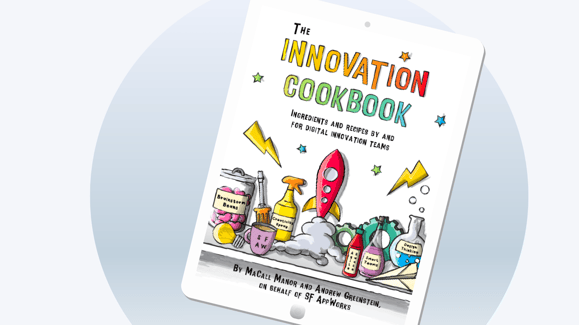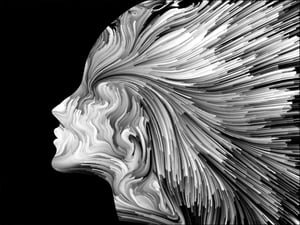When I used to think of the word ‘designer,’ my mind would conjure the image of a lean man with superior fashion sense, sporting thick-rimmed glasses and a deeply troubled gaze. (Morf Vandewalt from Velvet Buzzsaw, anyone?)
This sort of caricature may have once embodied the design world’s critical lens, but design thinking's more current energy is refreshingly less snooty. It wants a sharpened ability to see the world through the eyes of other people—compassion, not condescension.
Related: Working With Ambiguity
If you search the title question, you’ll find that Google’s all-seeing eye has lighted on the following definition:
"Design thinking refers to the cognitive, strategic and practical processes by which design concepts are developed."
Fair enough. To be clear, anyone can make what they want of the phrase, and there are paradigms to consider. A design made in purely artistic interest—“art for art’s sake,” if you will, probably doesn’t land under our magnifying glass, as we’re located in the realm of innovation.
For our purposes, I’d argue that at the bone level, a more useful definition of design thinking is simply a human-centric approach to solving a problem.
The “Design thinking” we’re thinking of
The term wasn’t necessarily coined by Tim Brown, or developed exclusively at his company, IDEO. But it was popularized by IDEO’s success in helping deliver consistent, game-changing innovations over the years, supported by the theory outlined in his book, Change by Design.
Here’s IDEO’s definition of design thinking:
"A human-centered approach to innovation that draws from the designer’s toolkit to integrate the needs of people, the possibilities of technology, and the requirements for business success."
Let's dig a little deeper.
SHIFT.
An easy way to conceptualize the shift to design thinking is to turn your attention from product to experience.
A broom is a product designed to clear away dirt and debris on the floor. A Swiffer, with its extendable rod, swivel head, and interchangeably wet and dry napkins, is an innovative sequel to the broom that takes its human counterpart into greater consideration. Its utility in picking up dust in tight corners and under furniture with disposable dirt cloths, easy storability, and versatility are all empathetic responses to the frustrating and stifled plight of the broom-user.
Designs in the transportation industry that center around the traveler’s experience rather than simply getting her from point A to point B are clear exhibits of design thinking. We exercise design thinking when we think less about creating the ‘next best’ product, and more on transforming an existing experience into an exciting, satisfying, or simply improved one. He or she who practices design thinking must learn to flex the intuition, and tap into even the most nuanced of human emotions—delight, distaste, triumph, remorse, etc.
The shift to design thinking involves becoming a more attuned observer. As Tim Brown so succinctly puts it, “behaviors are never right or wrong, they are always meaningful.” What’s widely considered to be “the norm” isn’t always what people are actually doing, so pay close attention.
Related: What is Rapid Application Development
Get a Free Copy of "The Innovation Cookbook"

EXPLORE.
In the next phase, design thinking is exploratory. It involves ideation, creation of (multiple) prototypes, testing, and refining those prototypes. Rather than a linear path with carefully measured milestones, it oscillates between divergent and convergent means of problem solving to get the job done.
Divergent thinking - focuses on quickly generating numerous ideas, whether they’re coming from different members of a team, or multiple ideas per one or two individuals
Convergent thinking - focuses on analysis of ideas, isolating the best strategies, and using decision making techniques to push projects into the next and final phases
This exploratory approach is effective because rapidly ideating and building prototypes informs an innovation team more wholly as to the nature of the problem. Issues and obstacles can be realized and dealt with in earlier stages, rather than months away when morale’s neck is on the line. Exploration utilizes emerging technologies and the many minds of its team to do things that have never been done before—to fail, to repeat, to fail again, and ultimately succeed. There is a time to converge and make tough decisions, but it comes after a night of dancing with many different partners, so to speak.
Design’s growth into design thinking holds promise for innovation (and innovation teams) because it moves from analysis of a product to a deeper understanding of the connection between the product and human-being. It places quality above quantity and creates impactful opportunities for design in a world where sustainability equals survival.
Related: Using One-Week Design Sprints to Prototype New Ideas



COMMENTS